Autocase hosted over 50 of Toronto’s resilience and sustainability experts at Evergreen Brick Works for a day of conversation on high performance and resilient buildings and sites.

Topics of discussion ranged from schools as community and resilience hubs to former Toronto Mayor and current C40 Cities Executive David Miller’s imperative for cities to take bold action on climate change.

An example of city climate initiatives discussed was the Toronto Green Standard. The value that economic analysis provides in the resilience and sustainability field was illustrated by discussions on Metrolinx’s approach to business case development for public benefits as well as the CaGBC’s business case for zero carbon buildings and the need, in future, to include embodied carbon into the analysis of. As well as many Triple Bottom Line Cost Benefit Analysis (TBL-CBA) case studies, an innovative design for a new Toronto community centre was previewed.
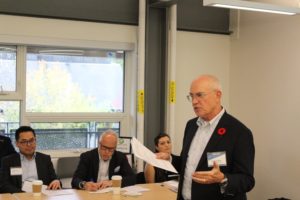
Autocase CEO John Williams got the proceedings underway by arguing that buildings have recently got a bad carbon rap and that we should not forget the many benefits that buildings bring. Frank Lloyd Wright’s “Boulder” statue (created by Richard Brock and shown above) vividly reminds us of the basic need for shelter that our buildings provide. John emphasized the need, and his mission, to take best practices, automate them, and make them available at scale to building owners, architects and engineers.
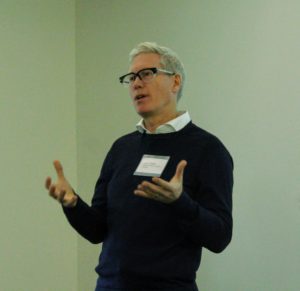 Cam Collyer of Evergreen outlined their work with 3,657 schools across Canada to green schoolyards and to integrate their design into learning and development. Taking inspiration from Paris’ investment in schoolyards as cooling stations and community building hubs to combat extreme heat events and social unrest, Cam noted that while Paris has 200 acres of schoolyards, Toronto has a tremendous opportunity with 4,000. Other approaches such as Berlin’s biotope area factor to legislate the percentage of ecologically effective surface area and the need for deep and continuous renewal to engage students and teachers introduced key themes that re-emerged throughout the day:
Cam Collyer of Evergreen outlined their work with 3,657 schools across Canada to green schoolyards and to integrate their design into learning and development. Taking inspiration from Paris’ investment in schoolyards as cooling stations and community building hubs to combat extreme heat events and social unrest, Cam noted that while Paris has 200 acres of schoolyards, Toronto has a tremendous opportunity with 4,000. Other approaches such as Berlin’s biotope area factor to legislate the percentage of ecologically effective surface area and the need for deep and continuous renewal to engage students and teachers introduced key themes that re-emerged throughout the day:
- Climate change action is happening locally at the city and building level;
- City regulations are adjusting to keep us aligned with our necessarily aggressive climate goals;
- Even if higher initial costs of sustainability initiatives are justified by a lifecycle analysis and TBL-CBA business case, they must be maintained through construction and operation by a project sponsor or champion.
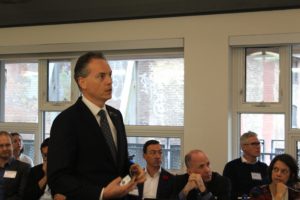 Matt Routley of Metrolinx showed how the transportation agency is requiring public business cases using a consistent methodology for any capital project. He outlined how the generalized cost of travel – not just the value of time spent on a transit trip for example, but also the time spent getting to and from transit, the time spent waiting and the time spent in uncomfortable or congested spaces – is what determines transit choice. He also discussed how effective density, that is by moving people closer together with high-speed transport, makes us more productive. Metrolinx has been looking at the heterogeneity in its users and its ability to help low income neighbourhoods access to more and better jobs. One of Matt’s key points was illustrated by Heathrow’s Terminal 5, delivered on-time and on-budget but not on-benefit as a key component of the building, the baggage handling, was not well integrated, planned and delivered. Metrolinx’s solution to ensuring a project is delivered ”on-benefit” is to require all projects to have a project sponsor whose responsibility is to ensure that the business case is a living document as the project progresses and to make sure the benefits promised are delivered.
Matt Routley of Metrolinx showed how the transportation agency is requiring public business cases using a consistent methodology for any capital project. He outlined how the generalized cost of travel – not just the value of time spent on a transit trip for example, but also the time spent getting to and from transit, the time spent waiting and the time spent in uncomfortable or congested spaces – is what determines transit choice. He also discussed how effective density, that is by moving people closer together with high-speed transport, makes us more productive. Metrolinx has been looking at the heterogeneity in its users and its ability to help low income neighbourhoods access to more and better jobs. One of Matt’s key points was illustrated by Heathrow’s Terminal 5, delivered on-time and on-budget but not on-benefit as a key component of the building, the baggage handling, was not well integrated, planned and delivered. Metrolinx’s solution to ensuring a project is delivered ”on-benefit” is to require all projects to have a project sponsor whose responsibility is to ensure that the business case is a living document as the project progresses and to make sure the benefits promised are delivered.
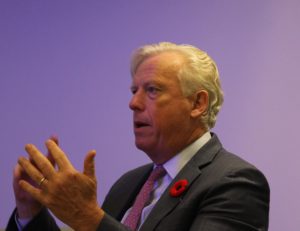 David Miller of the C40 predicted that the trend of city-led climate action will continue and that a coalition of the willing – not national governments – will lead. In fact, leaders such as United Nations Secretary-General Antonio Guterres, Michael Bloomberg, Al Gore and Alexandria Ocasio Cortez have praised the efforts of leading mayors and cities. Cities are already dramatically reducing carbon emissions, while continuing to prosper. In Toronto, for example, greenhouse gas emissions are down 33 per cent over 1990 levels. By taking the best of these ideas from cities and replicating them at scale we have a path to solving the climate crisis.
David Miller of the C40 predicted that the trend of city-led climate action will continue and that a coalition of the willing – not national governments – will lead. In fact, leaders such as United Nations Secretary-General Antonio Guterres, Michael Bloomberg, Al Gore and Alexandria Ocasio Cortez have praised the efforts of leading mayors and cities. Cities are already dramatically reducing carbon emissions, while continuing to prosper. In Toronto, for example, greenhouse gas emissions are down 33 per cent over 1990 levels. By taking the best of these ideas from cities and replicating them at scale we have a path to solving the climate crisis.
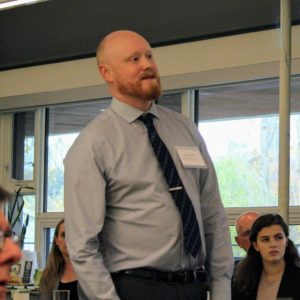 Finn Macdonald of CaGBC presented the Zero Carbon Building Standard and metrics for thermal and total energy, peak demand, operational and embodied carbon. A study of various building types across Canada made the case that the incremental 8% upfront capital costs were justified by a 1% net financial return over the lifecycle of the net zero carbon buildings.
Finn Macdonald of CaGBC presented the Zero Carbon Building Standard and metrics for thermal and total energy, peak demand, operational and embodied carbon. A study of various building types across Canada made the case that the incremental 8% upfront capital costs were justified by a 1% net financial return over the lifecycle of the net zero carbon buildings.
Finn noted a generational shift that was well underway. His young son’s retelling of a mis-heard “I’m putting grass in the grass tank of my car” perfectly illustrated how we must change.
“I’m putting grass in the grass tank of my car”
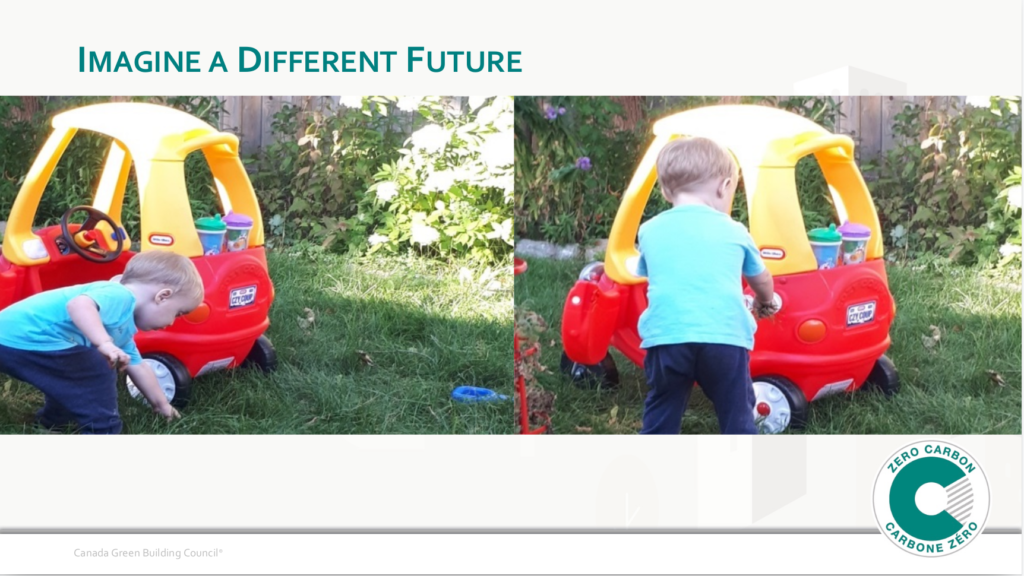
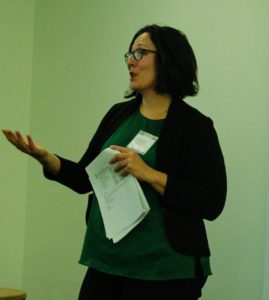 Shayna Stott of the City of Toronto gave us a reminder of how, despite not having the authority to change the building code, cities are leading on the climate file. Almost a decade ago, Toronto introduced 64 performance standards for air and water quality, waste etc. to all new development using planning tools rather than the building code. They have also provided a carrot in terms of development charge rebates. The resulting Toronto Green Standard and Green Roof Ordinance (now in their third iteration) means that in addition to 700 green roofs Toronto is continuing to lead on carbon reduction.
Shayna Stott of the City of Toronto gave us a reminder of how, despite not having the authority to change the building code, cities are leading on the climate file. Almost a decade ago, Toronto introduced 64 performance standards for air and water quality, waste etc. to all new development using planning tools rather than the building code. They have also provided a carrot in terms of development charge rebates. The resulting Toronto Green Standard and Green Roof Ordinance (now in their third iteration) means that in addition to 700 green roofs Toronto is continuing to lead on carbon reduction.
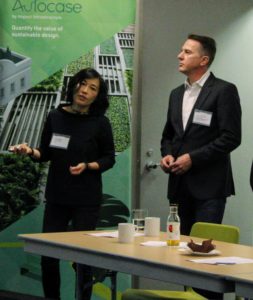 John Peterson and Jeanne Ng of MJMA gave an example of bringing innovative design to the tough brief of a community pool, gym and meeting place. Part of the challenge is that the City of Toronto as owner is pushing the team to deliver an extremely high-quality public space. Using an integrated design approach pulls together multiple disciplines and using a TBL-CBA lens to evaluate trade-offs allows them to create a “lighthouse project” for future community buildings.
John Peterson and Jeanne Ng of MJMA gave an example of bringing innovative design to the tough brief of a community pool, gym and meeting place. Part of the challenge is that the City of Toronto as owner is pushing the team to deliver an extremely high-quality public space. Using an integrated design approach pulls together multiple disciplines and using a TBL-CBA lens to evaluate trade-offs allows them to create a “lighthouse project” for future community buildings.
Overall, the meeting drove home that:
- Climate change action is happening at the city and building level;
- Cities are regulating, prodding, and leading by example;
- TBL-CBA business cases are necessary and with the addition of a project sponsor sustainability can be designed in to buildings.
If you’d like a copy of the presentations, let me know.
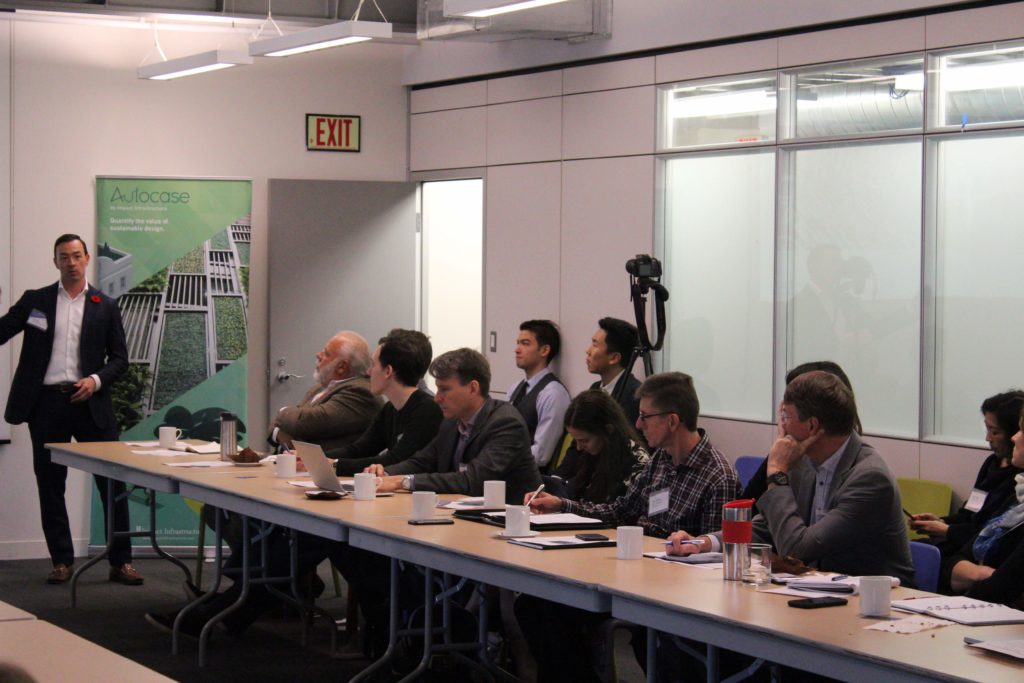

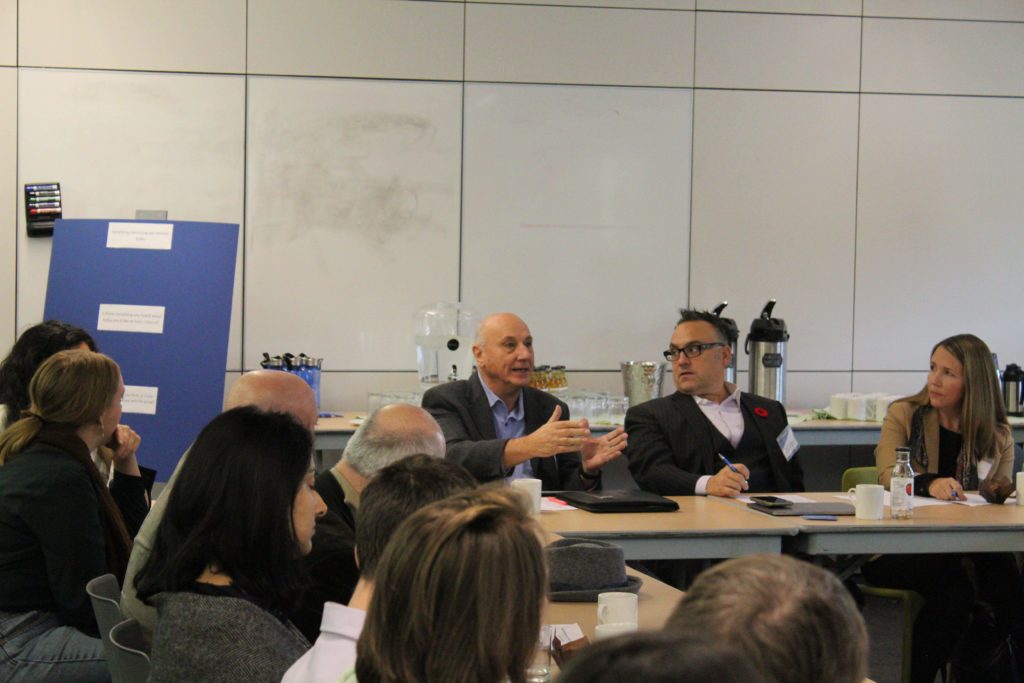

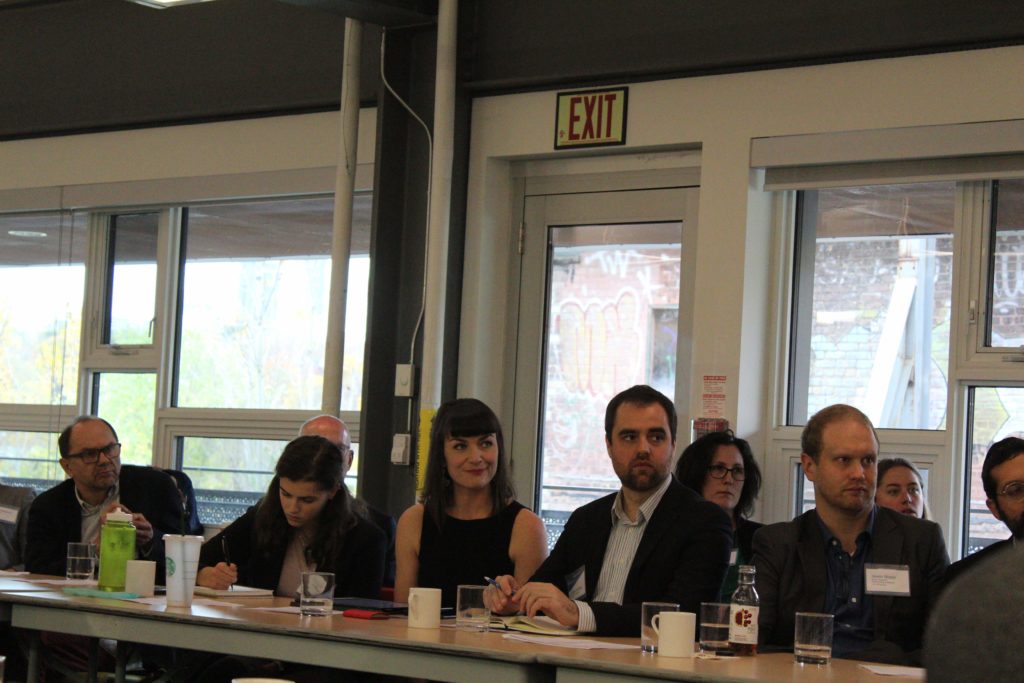


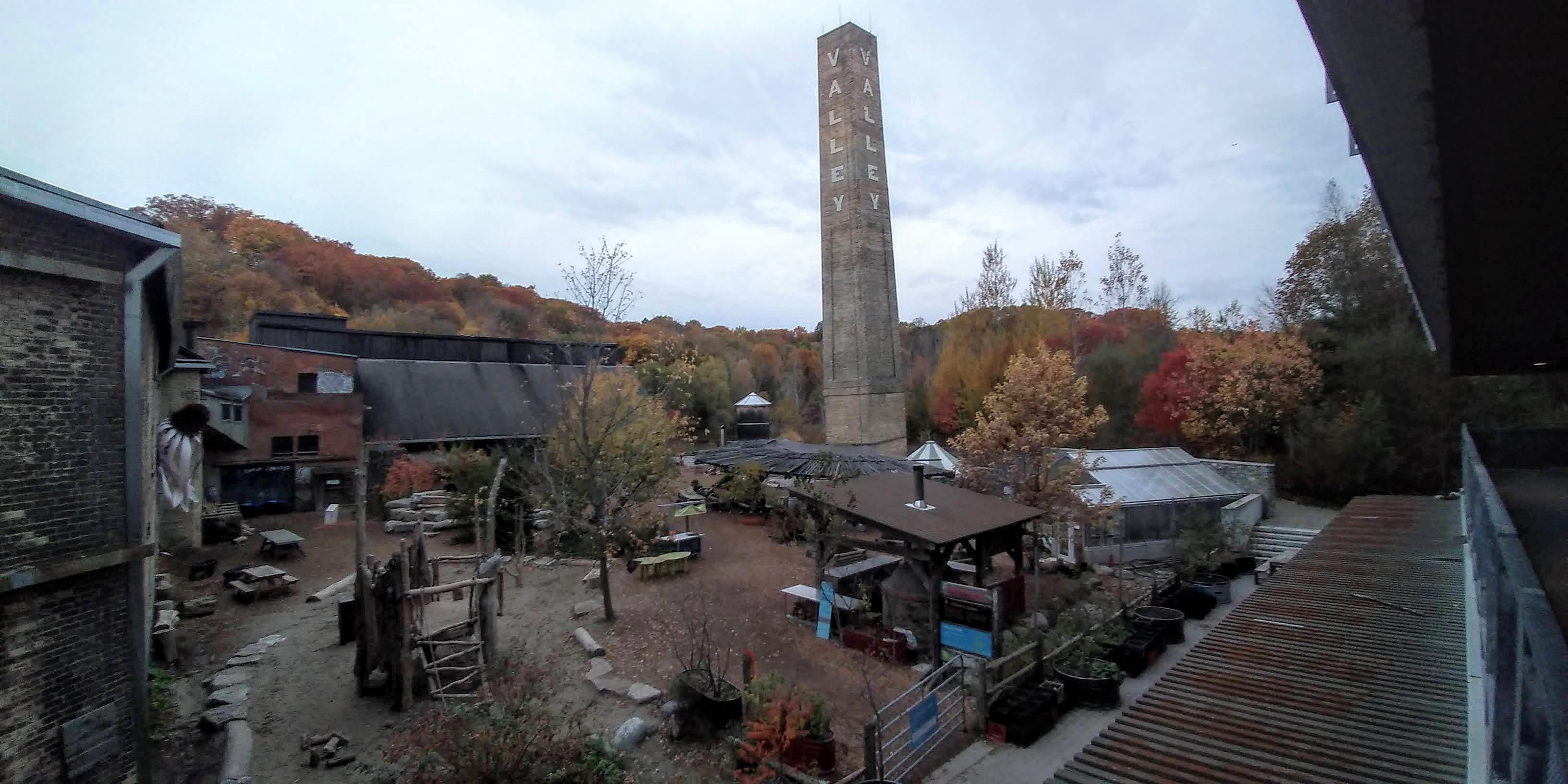
0 Comments